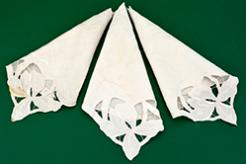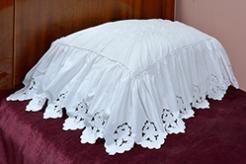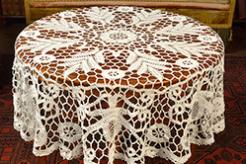




Author: Edīte Parute, Mag. art.
Decorativeness and Symbolism in Art Nouveau Ornament
Two important tendencies could be noticed in the ornament of Art Nouveau period, one being oriented towards form while the other focused on the image.[1] The former was related to the aesthetics of pronouncedly sinuous lines while the latter tended to create a stiffer, more linear, geometrical and abstract style. Riga’s Art Nouveau textiles and needlework had more of sinuous lines about the turn of the century but the late Art Nouveau textiles featured straightened lines as well as more constructive approach to the stylisation of natural forms and images.
Art Nouveau ornament echoed a number of inspirations, aiming at a creative interpretation of historical ornaments as well as yielding to the fascination with Oriental cultures. It was enthused by scenes and forms of long by-gone epochs, but also by the eye-catching contemporary innovations. In Latvia, these sources of inspiration for the Art Nouveau ornament influenced also needlework and home textiles.
Themes of nature were the most sumptuous part in the diverse spectrum of Art Nouveau ornament. Most popular were floral motifs (orchids, lilies, irises, tulips, violets, sunflowers, chrysanthemums) and birds (swans, peacocks, doves, pheasants). Chrysanthemums were a sort of exception in the array of spring and summer motifs predominant in Art Nouveau and were directly related to ornaments inspired by Japanese culture. They were often embroidered on tablecloths, towels and other home textiles, symbolically pointing towards the allure of exoticism in the European society of the time (towel with embroidered chrysanthemums and crochet lace on both ends made by the needlewoman Amālija Matizena (RJM 618, PL 163662)).
More information will be available in the virtual exhibition, which will be established till April 2016.
[1] Parute, E. Stila un modes enciklopēdija. Rīga: Jumava, 2010. 484. lpp.